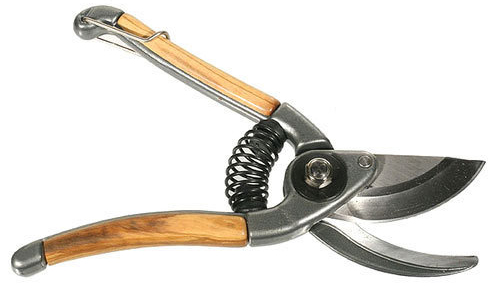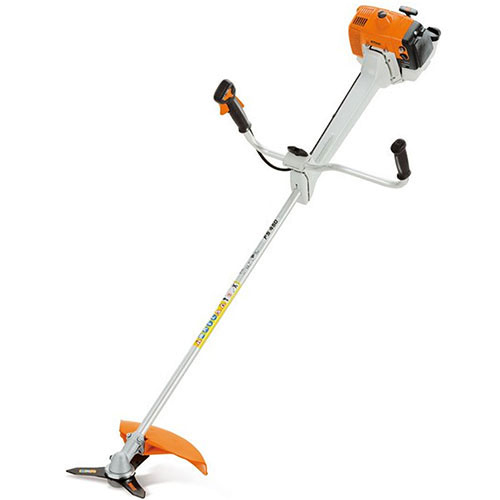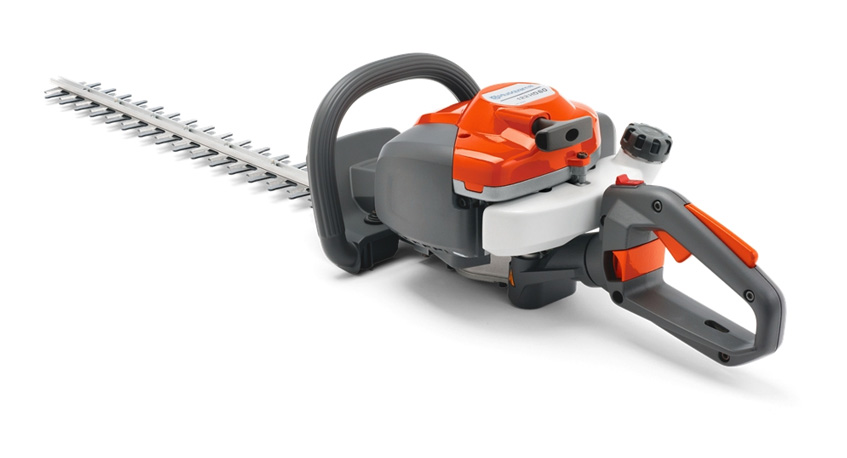The hedge-trimmer has been required for a long while; hedges & bushes have always needed sustaining and even more so from when they were used to separate the fields of farmers & guard animals and crops from the foul winter months.
Since way back when, hand shears were utilised; but, the innovation of the 19th century altered things as many labour-saving equipment and garden tools were thought up and several of these are still copyrighted these days. We The 20th Century gave way to a lot of the populace getting gardens of their own, this induced a reaction where people required gardening tools which had not come to exist at this point. Some of the more common ones being a garden fork, spade, hoes, garden trowel, hand fork, gloves, hose pipes, and the revolutionary wheelbarrow.

The hedge trimmer had important instances in it’s time-line; most significant are presented below.
1854: Leonard Wood who was living in Idaho conceived a product that had wheels that drove beside the hedge that had gears and an almost up-right cutting wheel and side to side cutters. Just like most devices of the time it depends on horse drawn movement, or eventually, steam power, however hand-held tools are some way away.
1865: A patent is given to A. Selover for a wood construction that depended on a saw together with versatile clamps and poles to manage the width and the level of a cut.
1871: An alternate frame-work gadget was built by the Vannosdall brothers.
1890: Andrew Fox coming from Ohio in the USA designed and crafted a piece of equipment which had an inverted cover in the shape of a ‘V’ & had many cutters at the front of it. Even during this very early time period we’re becoming closer and nearer to the actual multiple blade products we have & utilise nowadays such as strimmers and bush cutters
1891: Elliot, Robust registered and has approved a patent for a ‘mobile’ hedge-cutting device. It was mentioned to be much more of a torment appliance than other things, as it had to be run by somebody that was buckled to a lead of limitless length. Either end of the wire was linked with some thing at opposite ends of the pasture and motion was provided by what ever was available during the period. This was an evident indication that to make a portable device functional, major improvements for the weight and size of engines had to be made to permit range of motion.
1922: The Little Wonder organisation ltd. situated inside the U.K, created a hedge trimmer including a hand crank. It’s possibly amongst the 1st models of current day hand-held devices using reciprocating cutting-blades which we see so frequently now. It managed to stay in development throughout the 1950s and contrary to popular belief wasn’t just liked by gardening enthusiasts but particularly with pasta manufacturers too. Reason being the razor-sharp teeth were the perfect item to slice delicate strands of pasta. When 1935 arrived, ‘Schiller’ (based in the USA) acquired the business out & transported it back to the States; in the modern day these folks still build at three plants inside the U.S.
1940: A hand-held, 1 bladed (reciprocating), hedge-trimmer ended up being created by the ‘Little Wonder Company’.
1945: They create the very first double bladed reciprocating hedge-cutter.
1955: and the very 1st petrol powered hedge cutter is put out onto the market.
The Baby Boom
Post-war, the improvement of a lot of appliances altered, the hedge trimmer just like the chainsaw. The chainsaw manufacturers started bringing out: light in weight, small engine devices dependent upon brand new alloys as well as two stroke engines. From the start there appeared to be more of a focus around electrical power engines, since these are usually aimed towards being gardening products as an alternative to rural out-of-doors devices such as the chainsaw which is more typically petrol driven.
One of the reasons the units had become very popular in the household is undoubtedly a result of Black and Decker making it popular after they started mass producing them. Things ended up being forced even farther in ’62 when B&D introduced a variation of the cutter that comprised a mobile power pack of battery cells; it was a revolutionary concept, however since the power supply wasn’t effective in those days, it turned out less than satisfactory for the jobs it was made for. At present, B&D, Makita, Bosch plus a large variety of other companies are always competitive within the cordless hedge trimming market, supplying different types varying in size, energy and functionality.
B&D at first got control over the electrical power drill market, and acquiring this type of big research and development workforce helped them in the seventies to launch a hedge trimmer add-on unit to a drill, although this ended up being incredibly capable, it was actually never to become as effective as the actual specialist hedge trimmer.
McCulloch actually being one of the primary chainsaw innovators established that it was in fact the opportunity to widen towards the hedge trimmer industry during the 70′s. Today they are owned by ‘Husqvarna’ the number one out of doors tools manufacturer and you can see them among various other names of the firm such as Gardena. The McCulloch brand still pave the path for enhancement for the petrol section within the current market, fuel pumped easy start products and a few of their tools are the littlest and least heavy available, weighing only 5 kilos. Gardena make up the cord less model collection consisting of every thing hand-held and extended range types.
Arguably the most significant hedge trimmer aspect was the long reach hedge trimmer, created by Echo. The longer grip & saw blade enabled the home user to reach places that simply weren’t doable before when using a standard hedge trimmer.
The more high-priced versions possess pivoting grips that will bend to permit various angles to be acquired whilst cutting.
The look of things to come
During May Last year a patent had been released for a Multipurpose Debris Deflector created by Techtronic Outdoor Products Technology. As perhaps you might be aware, generally products can disperse debris in any direction, including from your person, therefore these kinds of ‘debris deflectors’ and other similar appliances are very desirable.
Consistent design changes in recent times has been met with welcome adjustments for example regulations now assert both your hands ought to be on your device for it to operate correctly. In the event that both hands are not used, the security cut-off attribute of the piece of equipment that will prevent it from operating the actual blades. Safety clothing is also a must have.
The Government has frequently pushed good development and innovations inside the petrol engine industry. 2 stroke motors are rather light weight and do not need an oil container, these have the capability to trim at all orientations in addition to the wrong way up if the needs should come up. The sole negative they’ve got is definitely the awful emissions which they emit when compared to 4-stroke engines.
Ryobi claim to possess the answer, a 4 stroke model which can be considered as a no mix engine. It meets the strictest emissions assessments and apparently will work at virtually all angles. Although it has already been used in garden strimmers it’s fully predicted to be moved on to the hedge-trimmer market eventually.

The two stroke aspect within the power industry is also experiencing substantial innovations. A 70 percent less pollution levels record throughout the collection from the motor manufacturer Tanaka in ’98 was an encouraging study. The vast majority of tool motor companies are generally looking for lesser engine emissions and environmentally friendly accreditations, however they’re always looking to improve power which can be a fine balance.
Outside the breadth of this short article, there is the continuing usage of hedge trimming tools that stick to agricultural vehicles, along with the industrial agriculture and parkland industry these deal with almost all hedges.
It’s extremely unlikely that hedge trimmers will become redundant at any point throughout the up coming fifty years due to way in which we look after our gardens so carefully now.

Hello,interesting site.Back in the late 1950s or 1960s we had a Villiers 4 stroke engined garden hegetrimmer…bright yellow painted,hydraulic powered hedgetrimmer,all on a 2 wheeled chassis pushed around to the hedge needing cutting. Heavy to hold,but cut the hedge well. Any idea of the make and if any survive? Have looked on You Tube,etc.,no luck. If you can give any information be pleased to hear Jon.